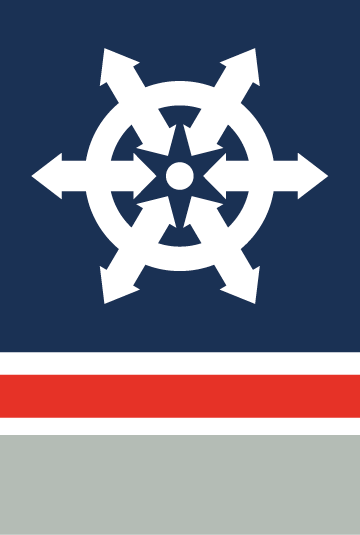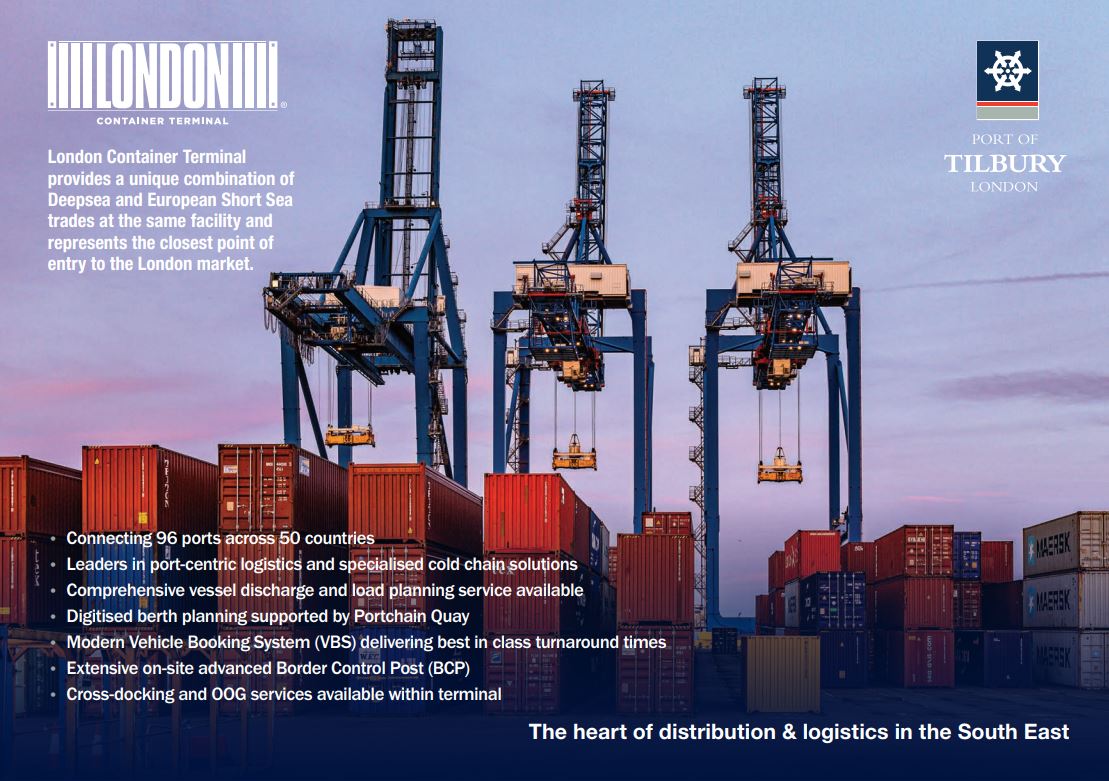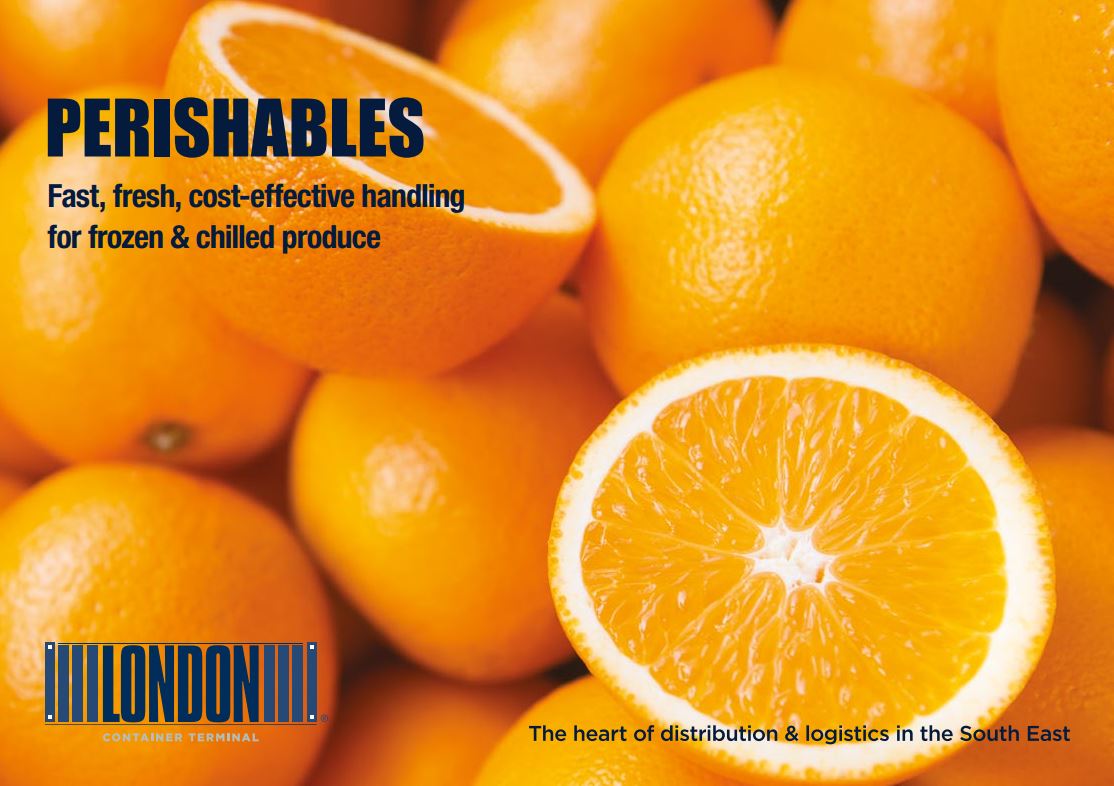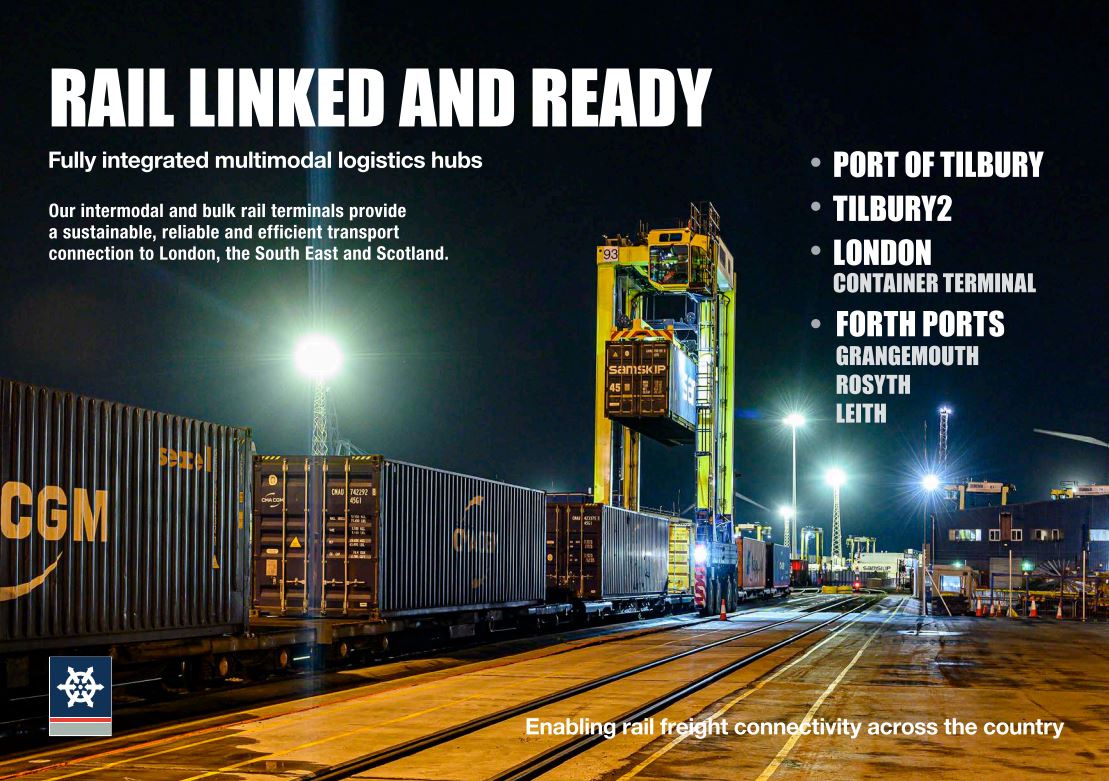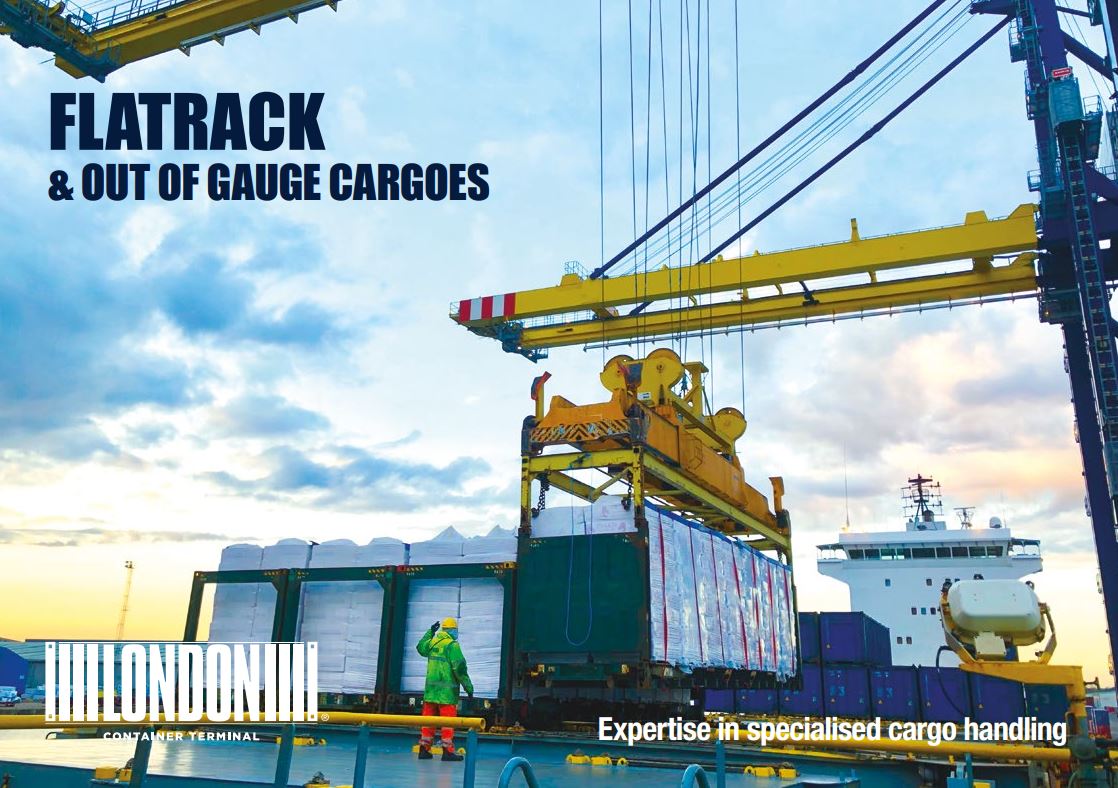London Container Terminal (LCT) is located on the north bank of the River Thames, just 22 nautical miles east of central London, making it the closest deep-water container port to the capital. Its prime position provides a strategic gateway for connecting London and the wider UK to global markets.
Situated just minutes from the M25 motorway and supported by daily rail freight services to key logistics hubs, LCT offers fast, reliable multimodal connectivity across the UK. With 18 million people located within a 75-mile radius, the terminal enables efficient access to a significant consumer base, reducing road mileage and contributing to lower carbon emissions.
LCT is equipped to handle both deep-sea and short-sea container vessels, operating across a combination of in-dock berths and deep-water riverside berths with a depth alongside of up to 13.7 metres. The terminal offers a total of 1.72 km of quay and can accommodate vessels of up to 10,000 TEU, making it a highly capable and flexible facility for a broad range of shipping needs.
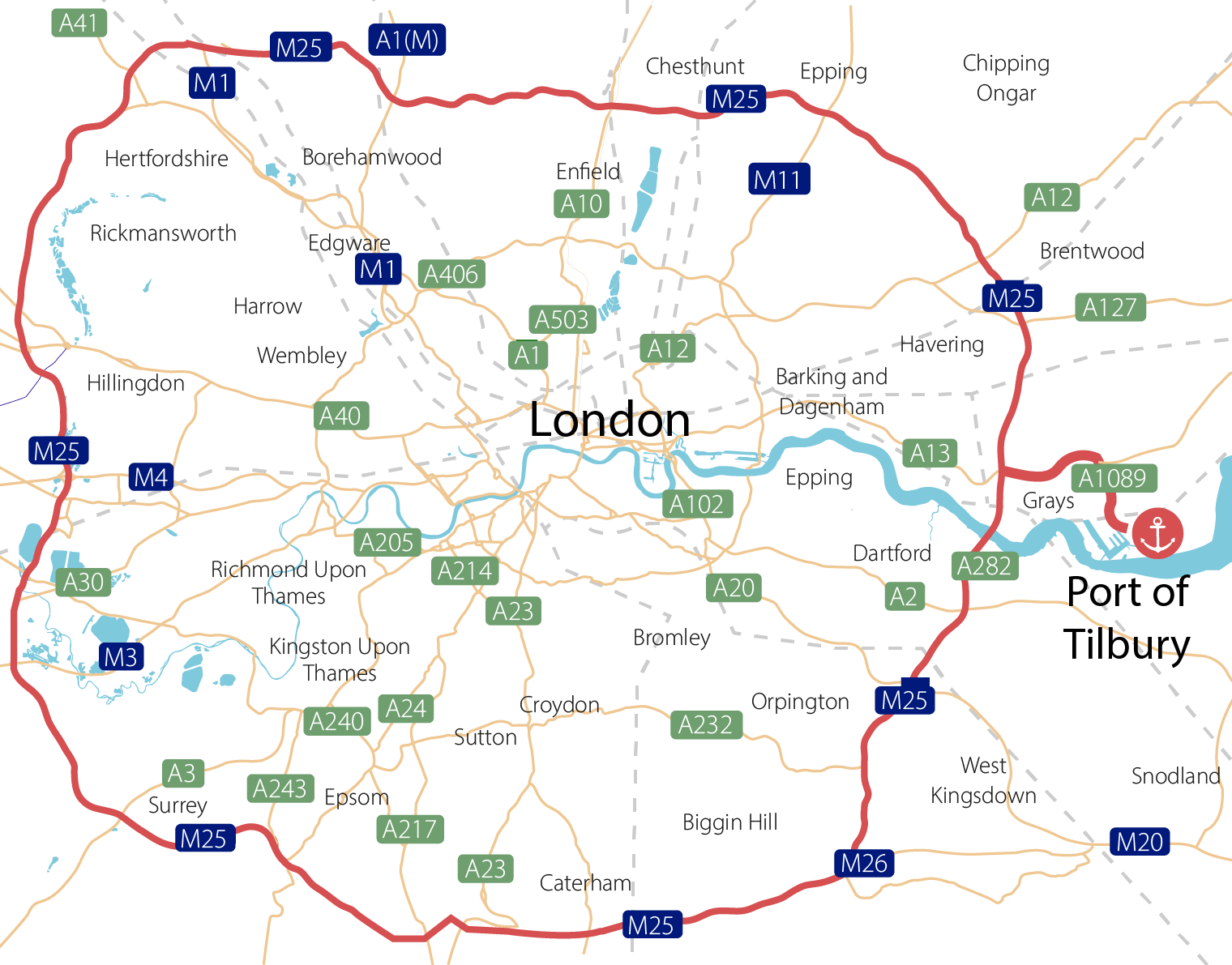
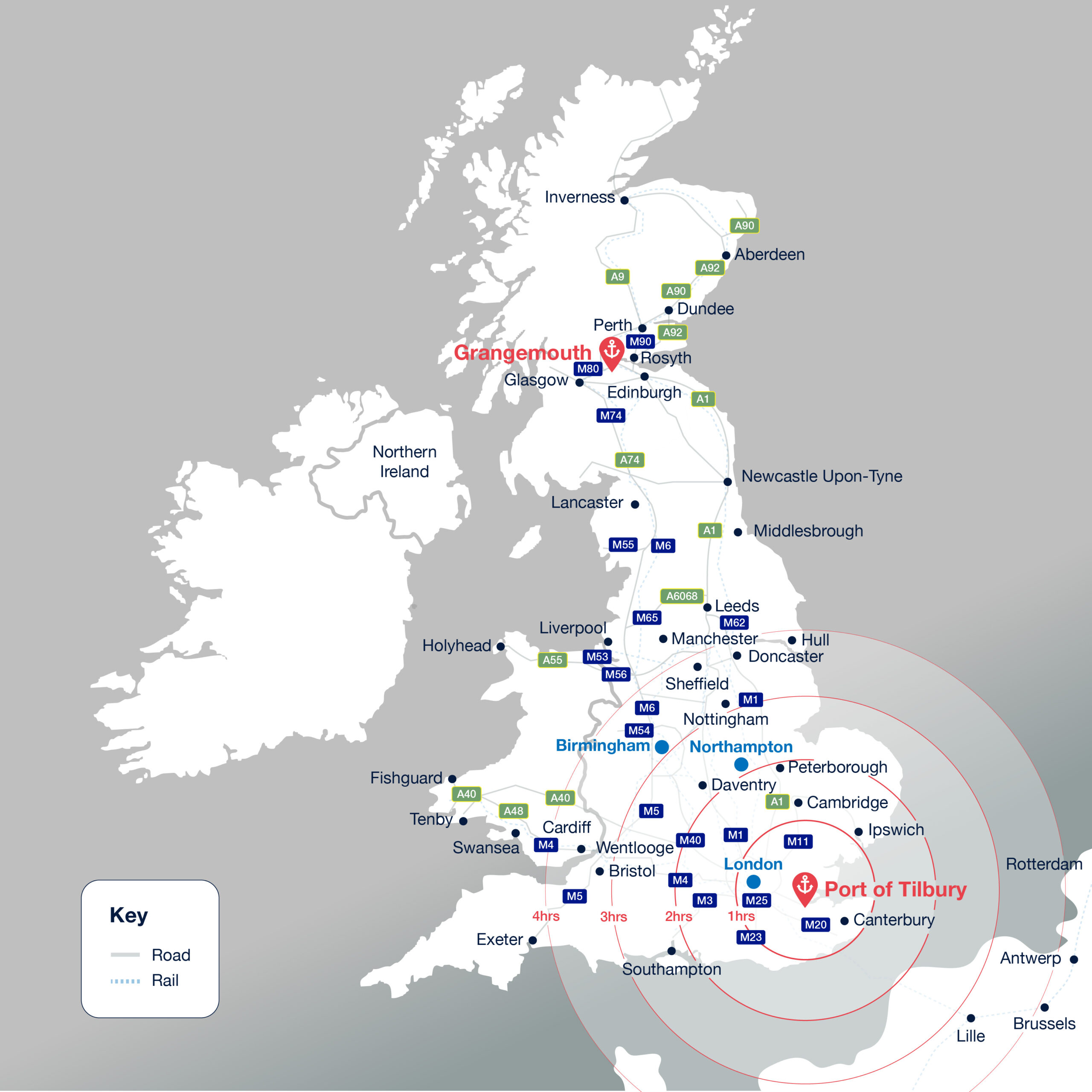
Directions
SAT NAV: RM18 7HX
- From M25 join A13
- Use the left lane to take the A1089 slip road to Tilbury Docks
- Continue onto Dock Approach Rd/A1089
- At the roundabout, take the 3rd exit onto St Andrew’s Rd/A1089
- Take next right and pass through Port of Tilbury Main Gate
- At the roundabout, take the second exit and follow road around the port to London Container Terminal gate
- Follow signage and traffic light system through canopy security to reach terminal grid and terminal offices
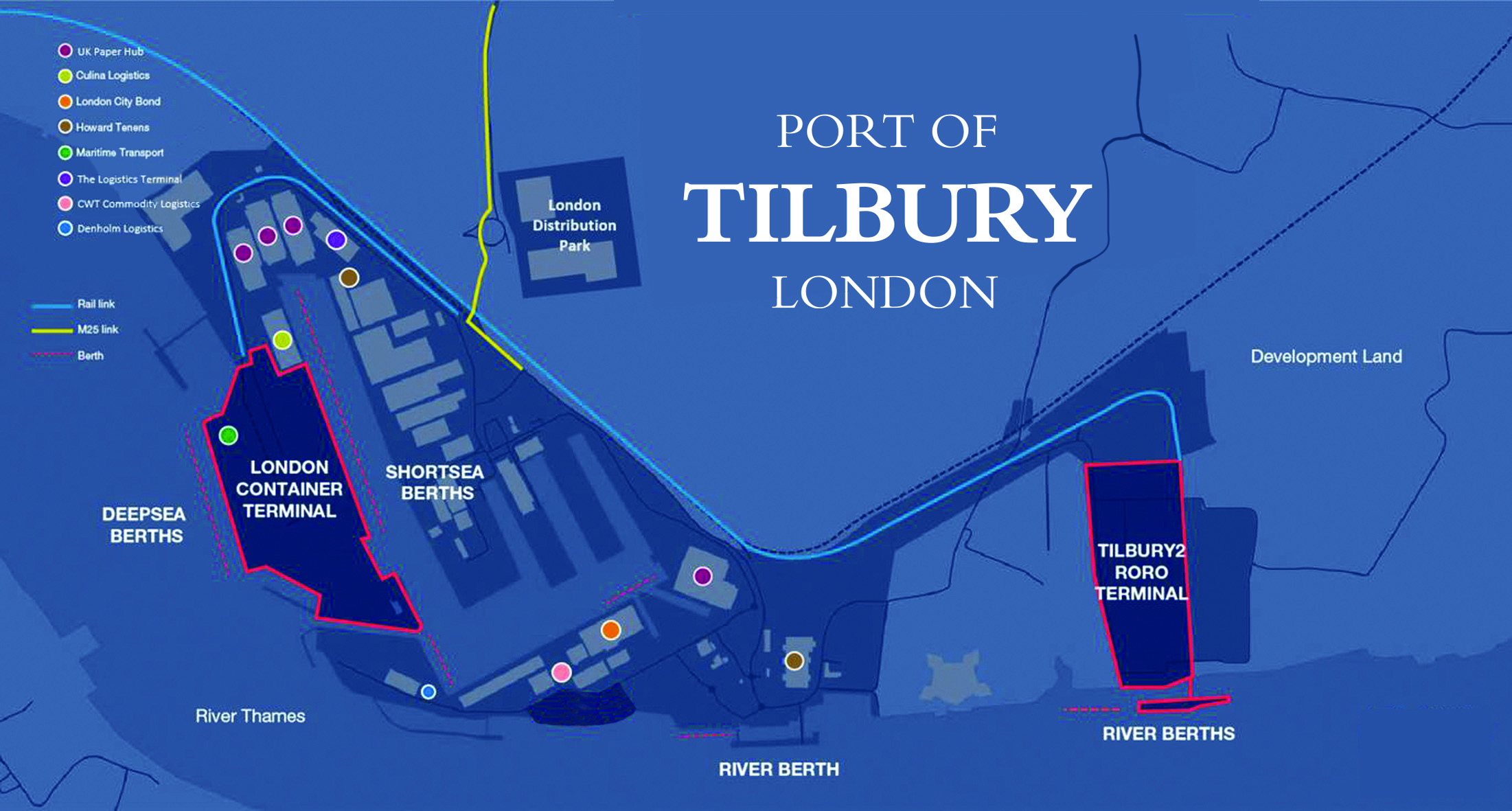
Terminal Layout
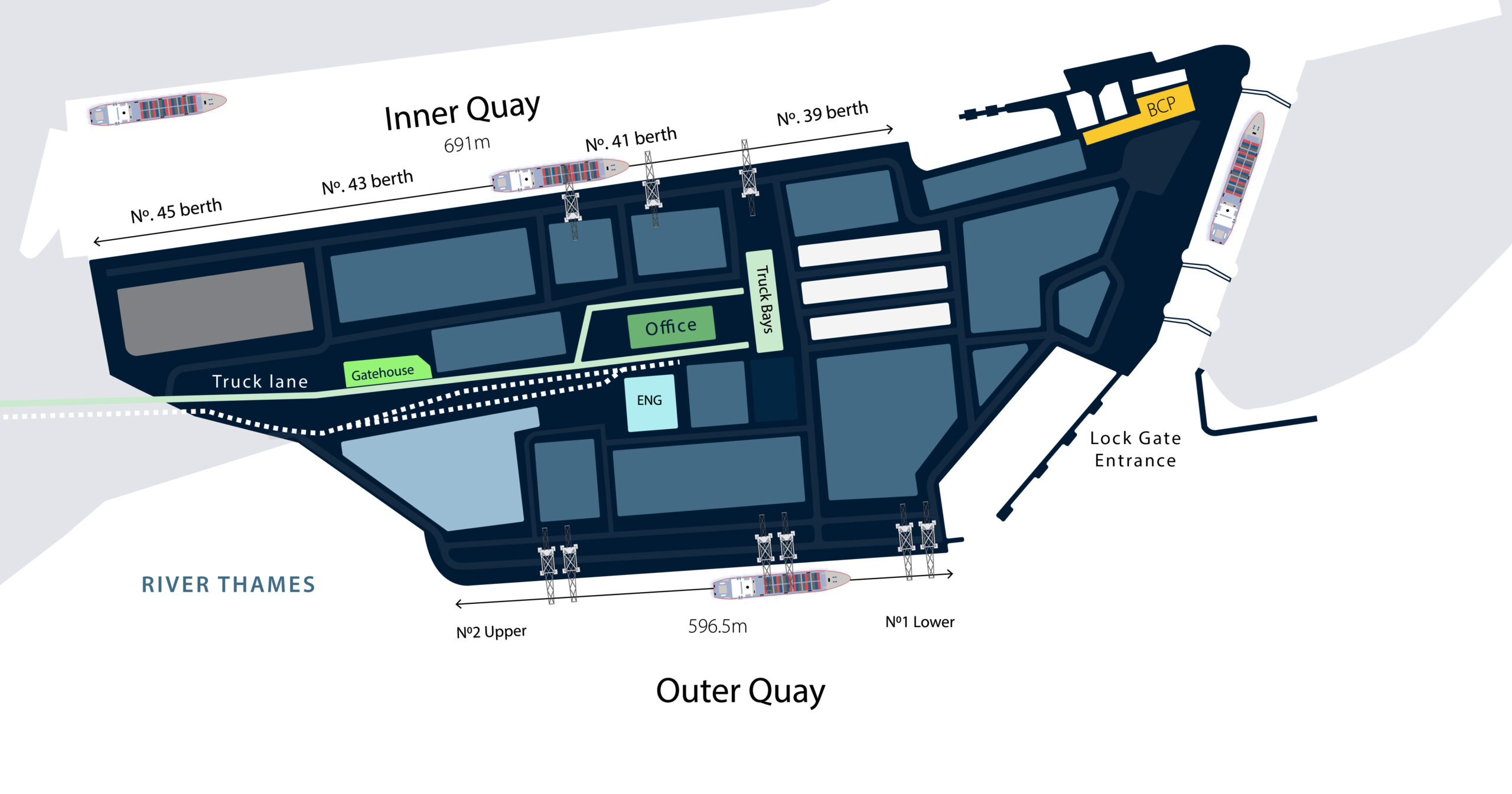

Marine Information
Max Vessel:
10,000 TEU with 19 container bay width
Water Depth:
Outer quay has a 13.4m upper, 11.2 middle and 11.1m lower max depth alongside
Inner quay allows max 10.4m draft at 42 berth – for latest depth contact London Container Terminal
Lock:
Max 262m LOA, 32.3m beam and 10.5m draft
Quay:
1,720m total length
Tides:
No tides within the enclosed dock. River Thames tidal range is max rise and fall of 7m and max current of 3.5 knots.
Bunkering:
Services are supplied by barge and arranged through ship’s agent, permission must be granted by the Port of Tilbury Duty Harbour Master.
Radio:
Manned 24 hours a day and listens on VHF channel 4 – call sign ‘Tilbury’, with channels 15 and 17 as the working channels.
Anchorage:
Sunk pilot, Southend and North East Spit Pilot Station off Margate.
Pilotage:
Compulsory for all vessels of 50 metres LOA and over navigating within the PLA pilotage area – in this instance between Sea Reach No1 Buoy and the Port of Tilbury. Pilotage is also compulsory for vessels over 80 metres LOA navigating between Sea Reach No 1 buoy and the Sunk and North East Spit pilot stations. Pilotage exemption certificates, subject to exclusion are issued by the Port of London Authority. Tel: +44 (0)1474 562200
Towage:
Available 24 hours per day, seven days a week
1. Svitzer Towage Ltd
Tel: +44 (0)3456 081346
2. Kotug Smit
Tel: +44 (0)1375 641288
Equipment
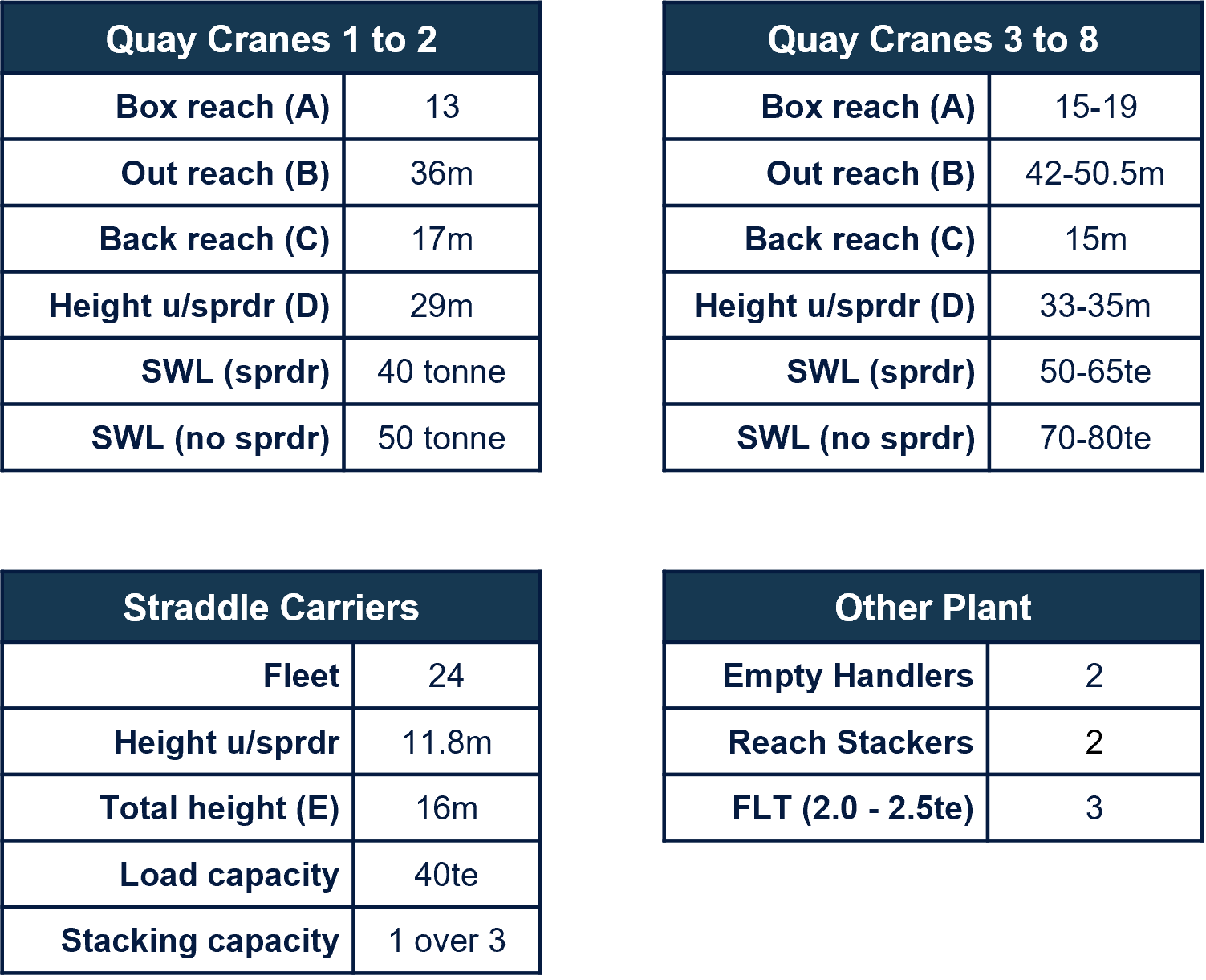
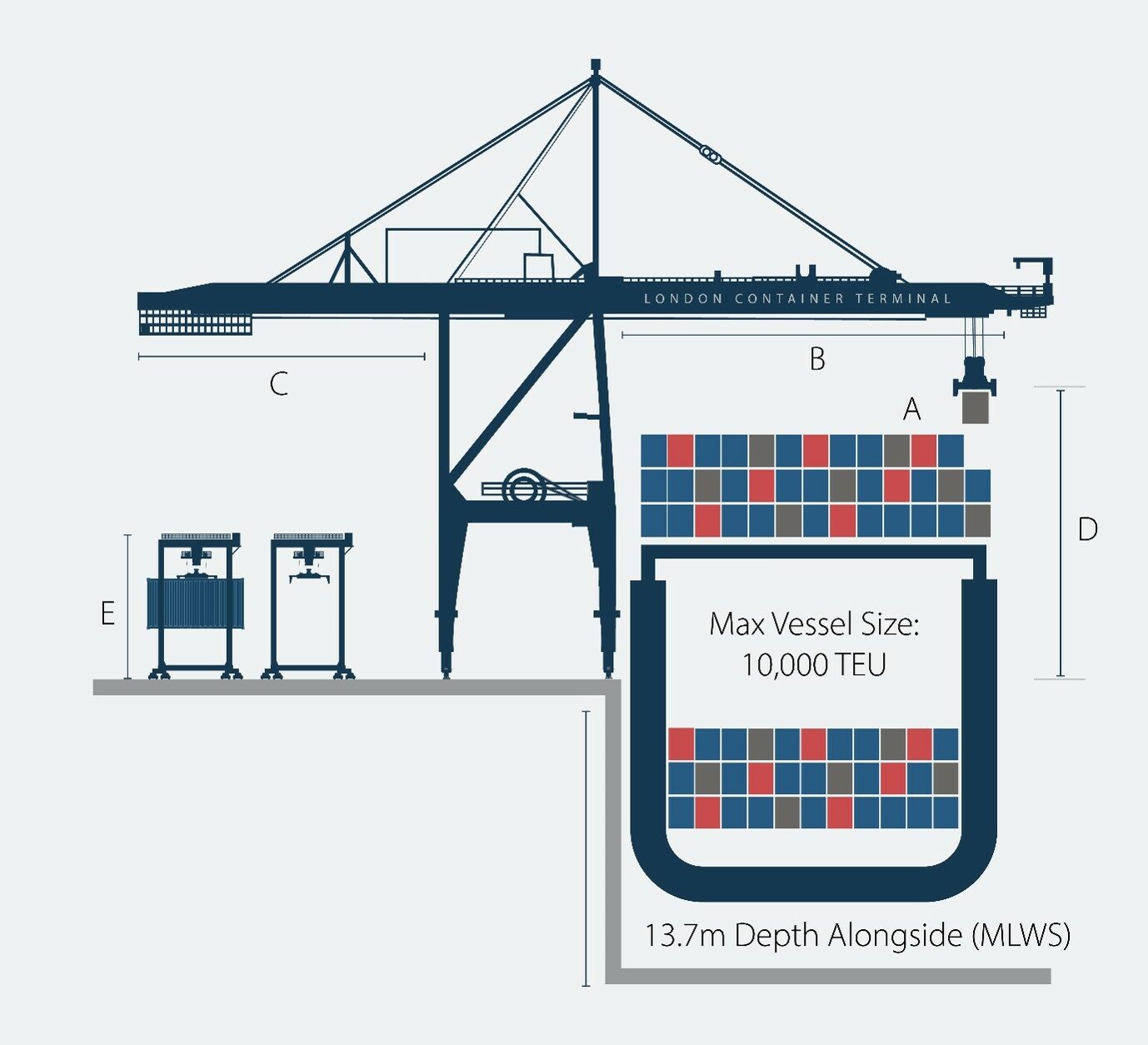
Rail
LCT features an integrated railhead designed to support the efficient movement of intermodal freight, with 24/7 capacity to handle both maritime and domestic rail traffic. The railhead enables seamless cargo transfers between vessels, the storage yard, and rail services, streamlining operations and reducing dwell time. The rail sidings are fully compatible with straddle carrier operations, allowing for the fastest possible train turnaround times.
LCT’s rail infrastructure is capable of handling the UK’s longest freight trains, with a four-line pad ranging from 250 to 282 metres in length, along with extensive reception sidings for train stabling and manoeuvring. The terminal operates as an open-access facility, welcoming multiple train operators to support flexible and competitive rail services.
Scheduled rail connections are available to key locations including the Midlands, Wales, and Wakefield, with extended reach into continental Europe and the wider international rail network via the Channel Tunnel. For customers seeking rail-connected warehousing, the terminal is adjacent to a 55,000 sq ft facility operated by Maritime Transport, offering cross-docking and storage solutions.
LCT is committed to promoting more sustainable logistics by prioritising rail as a low-carbon alternative to road freight. With its strategic location, advanced equipment, and robust rail links, LCT offers a greener, more efficient supply chain solution.
Reefer Care
LCT plays a vital role in the UK’s food supply chain, serving as a key gateway for temperature-controlled and perishable cargo. Strategically located in the heart of the UK’s largest consumer market, LCT is supported by specialist cold chain infrastructure designed to keep essential goods moving safely and efficiently.
With over 40% of the UK’s food imported, LCT recognises the critical importance of protecting food and drink cargo. The terminal is a nationally significant hub for the import of fresh produce, particularly fruit and vegetables, from key growing regions in Iberia and West Africa. To support this, LCT is equipped with over 1,400 reefer points and operates a dedicated reefer team 365 days a year, using state-of-the-art temperature monitoring technology to ensure optimal cargo care.
The success of fresh produce logistics depends on both high-quality infrastructure and experienced personnel, both of which are core strengths at LCT. Adjacent to the terminal is the UK’s largest temperature-controlled quayside warehouse, operated by Culina, providing fast and cost-effective handling of chilled goods including fruit juices and dairy products.
Adding to its strategic advantage, London’s three historic wholesale food markets, Smithfield, Billingsgate, and New Spitalfields, are relocating to a new unified site in Dagenham, just minutes from LCT. This development reinforces the terminal’s position as a critical link in the UK’s cold chain network, ensuring reliable access to fresh food for millions.
Border Control Post
LCT features a comprehensive and technologically advanced Border Control Post (BCP), designed to facilitate inspections by a wide range of statutory authorities, including Port Health, UK Border Agency, Special Branch, the Forestry Commission, Plant Health and Seeds Inspectorate, Horticultural Marketing Inspectorate, and Trading Standards.
In addition to supporting these official inspections, LCT provides value-added services to customers, including container loading and unloading through multiple cross-docking bays, streamlining cargo movement and reducing delays.
The BCP is equipped with extensive temperature-controlled storage areas for the handling of chilled and frozen goods, ensuring that perishable cargo is maintained in optimal condition. Our experienced staff work in close coordination with inspection authorities to ensure customer consignments are processed swiftly, securely, and with the highest standards of care.
OUT OF GAUGE CARGO HANDLING
LCT has extensive expertise in managing all types of Flat Rack (FR) and out-of-gauge (OOG) cargo, including construction modules, yachts, military equipment, large industrial machinery, generators, and heavy plant. We collaborate closely with customers to fully understand the unique requirements of each shipment, offering tailored advice to determine the most effective handling solutions.
On-site lashing and securing services are available, supported by a well-established network experienced in preparing OOG cargo for safe transport. Safety is at the heart of everything we do, with rigorous standards upheld by our dedicated team to ensure your cargo and transport partners are always in trusted hands.
HAZARDOUS CARGO HANDLING
LCT is fully licensed to manage all classes of dangerous goods in container form, including ISO liquid bulk tank containers and Class 1 explosives. The terminal’s IMO licence specifies the permissible quantities of Class 1 explosives (NEQ) per berth, with all Class 1 shipments requiring direct delivery to or from the vessel under Police Escort. Similarly, ammonium nitrate derivatives transported in containers must also be delivered directly to or from the vessel.
All dangerous goods must be declared prior to arrival within the Port Limits, in accordance with the requirements set out in the Dangerous Goods Handling and Application Regulations (DGHAR) 2016 and the International Maritime Dangerous Goods (IMDG) Code.
The Marine Department oversees the processing of all hazardous cargoes. For any questions or further information, please contact the Marine Department directly.
Email: Marine.department@potll.com
Phone: +44 (0) 1375 852456
